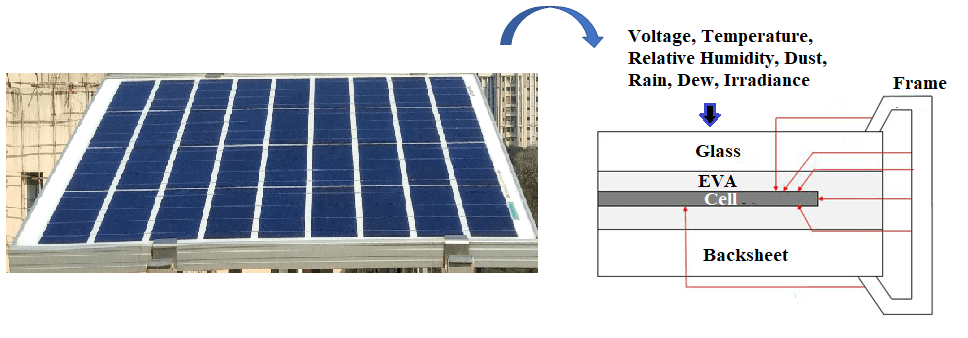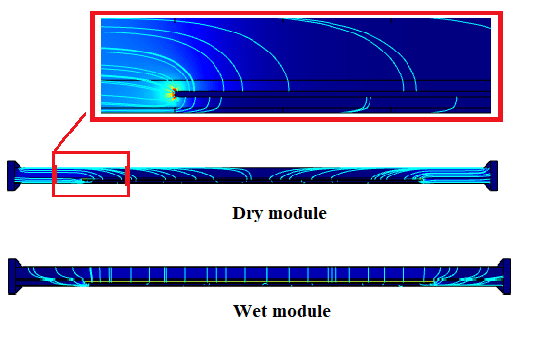



Solar Photovoltaic (PV) modules in PV plants are connected in series to form strings as it is economical to evacuate power at higher voltages and lower currents. As the frames of PV modules and the metallic structures on which they are mounted are grounded, the electrical cell circuitry in some modules in a PV plant would experience a high voltage with respect to the frame. This results in the flow of leakage current through the various module layers such as front glass, encapsulant, and backsheet (as shown in the figure above). The leakage current is critical when the reliability and normal operation of the PV plant is concerned.

Glass has the lowest resistivity (and highest thickness) among the materials used in PV modules, followed by EVA. Thus, the majority of the leakage current flows through the glass and EVA (as shown in the adjacent figure). The leakage current takes the shortest path and is concentrated in the region of EVA and glass between the cell and the frame. Thus, the use of high resistivity glass or encapsulant is an effective strategy in reducing the leakage current in PV modules. In addition to the materials, the leakage current strongly depends on the module temperature, as it exponentially increases with the temperature.Moreover, it has been observed that the leakage current increases considerably when the module is wet (during the events of rain or dew). The root cause behind this increase is a change in the orientation of the electric field in a wet module, which leads to an increase in the effective area through which the current can flow, and not the ingress of water inside the module.
Thus, the leakage current in PV modules depends on various system and environmental factors and also on the materials, the properties of which can be altered to reduce the module leakage current.


